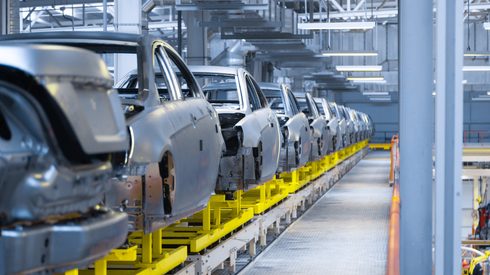“From 2017 to 2022, demand from the energy sector was the main factor behind a tripling in overall demand for lithium, a 70% jump in demand for cobalt, and a 40% rise in demand for nickel,” according to the International Energy Agency’s (IEA) critical minerals report released on July 11.
The agency expects the demand to continue increasing rapidly, more than doubling by 2030.
This growth in demand stemmed primarily from the growth in EV sales.
Battery demand rose by 70% and 50% in China and the US respectively in the past year.
“This was due to the average battery size of electric cars in the United States being 40% higher than the global average, mainly because of the relatively higher share of SUVs in the country compared with other major markets,” the IEA said.
In the United States, ownership of larger SUVs has increased from about 25% in 1970s to around 75% today, according to the US Environmental Protection Agency (EPA).
Cars are also getting larger worldwide, however. Global SUV sales grew by around 3% between 2021 and 2022 and carbon dioxide (CO2) emissions from SUVs worldwide reached roughly 1 billion tonnes in 2022, according to IEA data.
Their larger size requires electric SUVs to have more powerful batteries.
Policies to speed up support and permitting are badly needed in Europe and the US to secure critical mineral supply chains, according to William Adams, Fastmarkets head of battery raw materials (BRM) and base metals research.
“China is the processing center for BRMs, the center of gravity. The longer we leave it, the harder it will be for the Western market participants to catch up with securing critical mineral supply,” he added.
This becomes an important consideration for original equipment manufacturers’ (OEM) supplies, because China could potentially introduce export controls as it did with gallium and germanium, or be subject to international sanctions.
However, there is, in theory, a limit to how big the EV market, and therefore demand, can get, according to Adams.
“The EV market is a certain size. With more car-sharing and automated driving, the size of the market is likely to shrink eventually. This will lessen the pressure on raw materials,” he said.
Smaller batteries, hybrids, different chemistries
While the charging infrastructure gets better, one way to solve the shortness in the availability of BRM supply is to decrease the battery pack size, Adams said, adding: “Smaller batteries charge faster, but for this to work, it requires a bigger and faster charging structure.”
Smaller batteries and hybrid cars are to be incentivized so that demand for critical minerals is moderated in the next two decades while real carbon emission reduction happens, according to Professor Tom Moerenhout of Columbia University’s Center on Global Energy Policy.
Larger vehicles, such as SUVs, that required more power, and cars that are intended to drive a longer range, end up requiring bigger batteries that use more minerals.
Mineral demand for large battery-only EVs can go as high as triple that of a medium-sized vehicle, according to Moerenhout.
“But most people drive 30-40 miles a day, so the minerals in the battery just sit there unutilized,” Moerenhout said.
Battery chemistry also matters, with lithium-iron-phosphate (LFP) batteries not using the nickel, manganese or cobalt that EVs with nickel-manganese-cobalt (NMC) batteries use.
Hybrid cars that use much less critical materials because they are backed up with combustion engines that meet the range requirements can also help lower the demand for critical materials. This is because they have a smaller electric battery size that averages around 30kWh, compared to the 250kWh of a Tesla Cybertruck or the 131kWh of a Ford F150 Lightning.
Plug-in hybrids can be a great solution and bridge to fully-battery electric vehicles, but there is a need for policies that ensure people indeed use the battery for their daily use, according to Moerenhout.
“If you want fully electric vehicles for a large part of the population, you need more minerals,” Moerenhout said.
Keep up to date with the latest news and insights on our dedicated battery materials market page.





